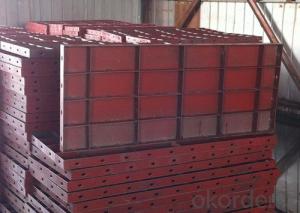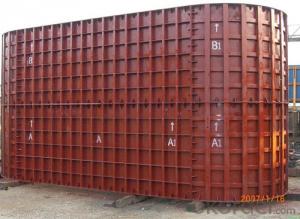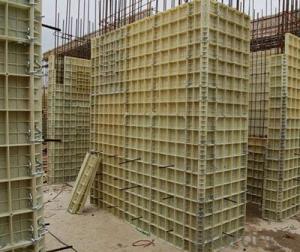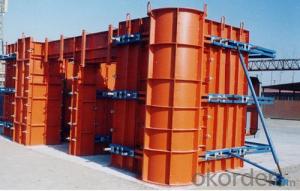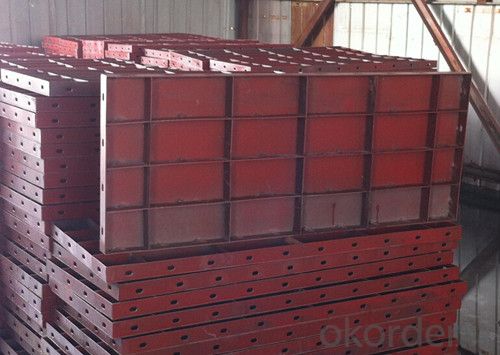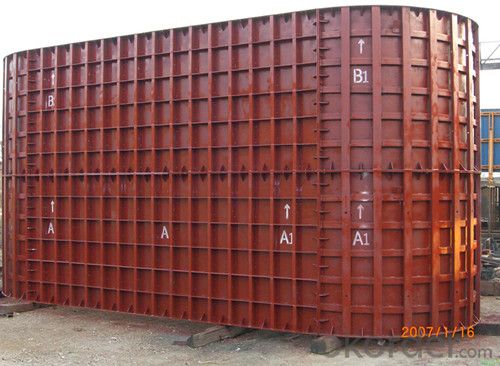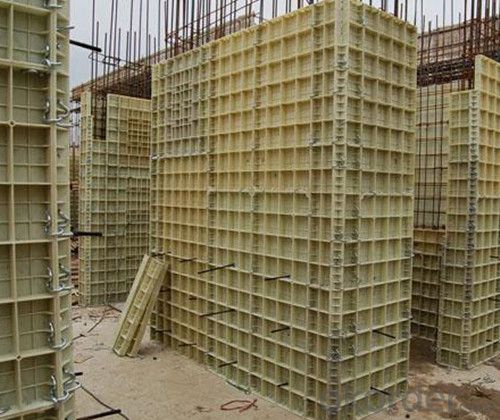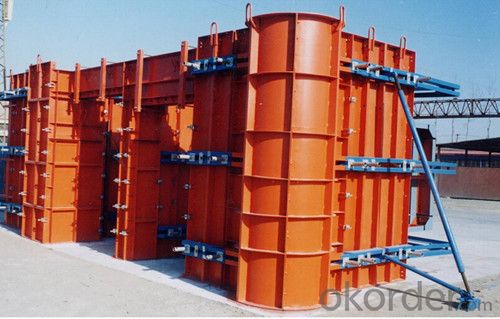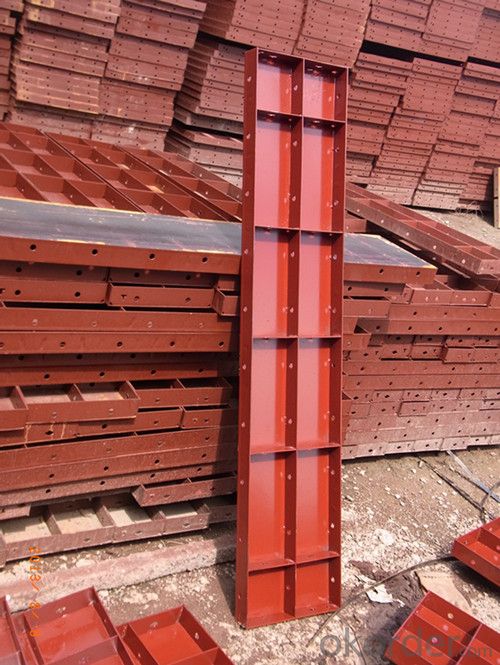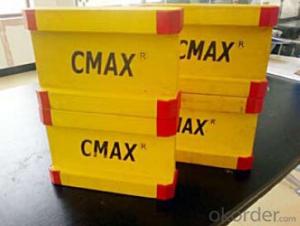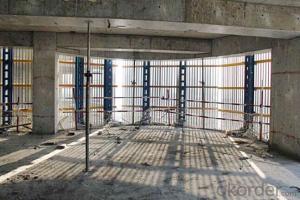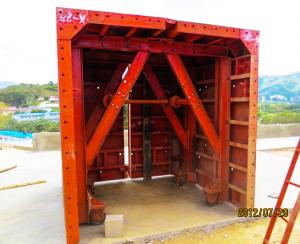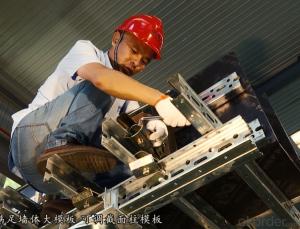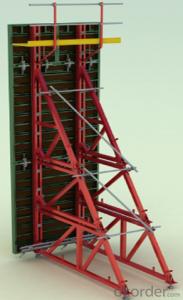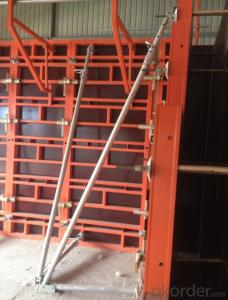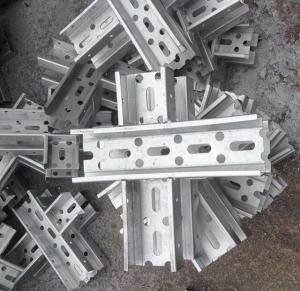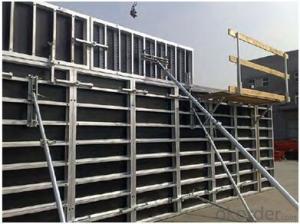Special Shape Steel Formwork for Airport Construction
- Loading Port:
- Tianjin
- Payment Terms:
- TT OR LC
- Min Order Qty:
- 50 pc
- Supply Capability:
- 100000 pc/month
OKorder Service Pledge
OKorder Financial Service
You Might Also Like
Introduction for Steel Formwork :
Steel Formwork:used in highway,railway,bridge,tunnel and shearing wall,etc.Our company CNBM which is one of the largest State-Owned Enterprises in China which established in 1984 , has gained the confirmation from the specialist of China Architecture Scence Institute, and has been used by many building operation units and has been highly praised.In 2014, the total turnover volume of CNBM exceeds US$410 billion dollars with a total staff of 180,000. CNBM is listed in the World Top 500 Enterprises !
Characteristic for Wholly Steel Formwork :
1. High Smooth Surface
2. Convex ling for Edge Rib
3. Specialized Connection Pin for Edge Rib Connection
4. High Stiffness for Steel Surface
5. Light Weight for saving producing cost
6. Fast Separate and Easy transport
7. Recycling using
8. Scientific and Reasonable design to meet different working condition
Parameter and Specification :
Code | Size (mm) | Weight (KG) | Code | Size (mm) | Weight (KG) |
P12021 | 1200*2100*55 | 102.96 | P4018 | 400*1800*55 | 28.3 |
P12018 | 1200*1800*55 | 88.4 | P4015 | 400*1500*55 | 23.8 |
P12015 | 1200*1500*55 | 74.15 | P4012 | 400*1200*55 | 19.1 |
P12012 | 1200*1200*55 | 60.11 | P4009 | 400*900*55 | 14.6 |
P10018 | 1000*1800*55 | 76.01 | P4007 | 400*750*55 | 12.3 |
P10015 | 1000*1500*55 | 63.96 | P4006 | 400*600*55 | 9.95 |
P10012 | 1000*1200*55 | 60.11 | P3018 | 300*1800*55 | 20.7 |
P10009 | 1000*900*55 | 39.32 | P3015 | 300*1500*55 | 17.4 |
P9018 | 900*1800*55 | 70.89 | P3012 | 300*1200*55 | 14 |
P9015 | 900*1500*55 | 59.47 | P3009 | 300*900*55 | 10.7 |
P9012 | 900*1200*55 | 48.03 | P3007 | 300*750*55 | 8.8 |
P7518 | 750*1800*55 | 57.8 | P3006 | 300*600*55 | 7.3 |
P7515 | 750*1500*55 | 48.47 | P3004 | 300*400*55 | 5.46 |
P7512 | 750*1200*55 | 39.16 | P2515 | 250*1500*55 | 15.17 |
P7509 | 750*900*55 | 29.85 | P2512 | 250*1200*55 | 12.24 |
P7507 | 750*750*55 | 24.81 | P2509 | 250*900*55 | 9.32 |
P6018 | 600*1800*55 | 43.1 | P2507 | 250*750*55 | 7.71 |
P6015 | 600*1500*55 | 36.3 | P2506 | 250*600*55 | 6.39 |
P6012 | 600*1200*55 | 31.7 | P2015 | 200*1500*55 | 11.6 |
P6009 | 600*900*55 | 23.9 | P2012 | 200*1200*55 | 9.4 |
P6007 | 600*750*55 | 18.55 | P2009 | 200*900*55 | 7.1 |
P6006 | 600*600*55 | 16.25 | P2007 | 200*750*55 | 5.9 |
P5018 | 500*1800*55 | 36.27 | P2006 | 200*600*55 | 6.39 |
P5015 | 500*1500*55 | 30.15 | P2004 | 200*450*55 | 3.64 |
P5012 | 500*1200*55 | 25.55 | P1515 | 150*1500*55 | 9.5 |
P5009 | 500*900*55 | 20.38 | P1506 | 150*600*55 | 4 |
P5007 | 500*750*55 | 15.48 | P1504 | 150*450*55 | 2.98 |
P5006 | 500*600*55 | 13.58 | P1015 | 100*1500*55 | 7.5 |
Code | Size (mm) | Weight (KG) |
P1012 | 100*1200*55 | 6.9 |
P1009 | 100*900*55 | 4.6 |
P1007 | 100*750*55 | 3.8 |
P1006 | 100*600*55 | 3.1 |
P1004 | 100*450*55 | 2.33 |
E1515 | 150*150*1500 | 15.2 |
E1512 | 150*150*1200 | 12.26 |
E1509 | 150*150*900 | 9.34 |
E1507 | 150*150*750 | 7.77 |
E1506 | 150*150*600 | 6.46 |
E1504 | 150*150*450 | 4.87 |
E1015 | 100*150*1500 | 13.13 |
E1012 | 100*150*1200 | 10.61 |
E1009 | 100*150*900 | 8.07 |
E1006 | 100*150*600 | 5.44 |
Y1018 | 100*150*1800 | 14.56 |
Y1015 | 100*150*1500 | 12.29 |
Y1012 | 100*150*1200 | 9.72 |
Y1009 | 100*150*900 | 7.46 |
Y1007 | 100*150*700 | 6.19 |
Y1006 | 100*150*600 | 5.19 |
Y1004 | 100*150*450 | 3.92 |
J0018 | 50*50*1800 | 4.34 |
J0015 | 50*50*1500 | 3.7 |
J0012 | 50*50*1200 | 2.94 |
J0009 | 50*50*900 | 2.3 |
J0007 | 50*50*750 | 1.9 |
J0006 | 50*50*600 | 1.5 |
J0004 | 50*50*450 | 1.13 |
FAQ :
1. Who are we ?
We , CNBM , are a State-Owned Enterprise which established in 1984 , have 32 years experience ,enjoy high reputation .
2. Our Advantage :
Customized products , we have our own R&D department , we can design the drawing and suggest the suitable solution for your project .
3. Our after-Sales Service :
The international Sales Manager and Engineer can go to your job site for work direction and help you deal with your project .
Factory Photos :
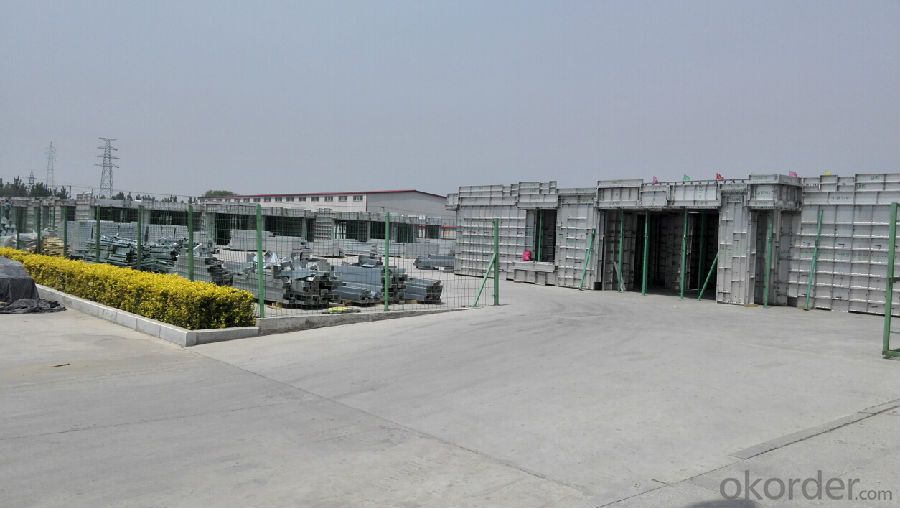
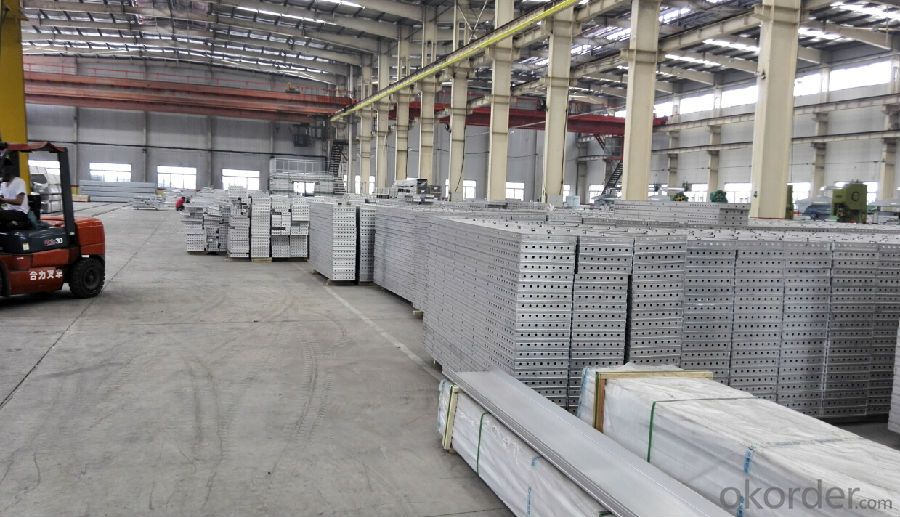
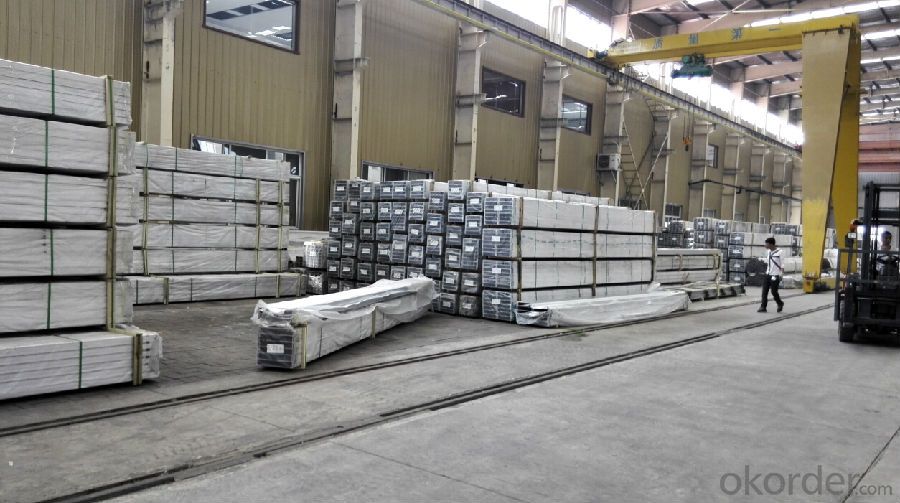
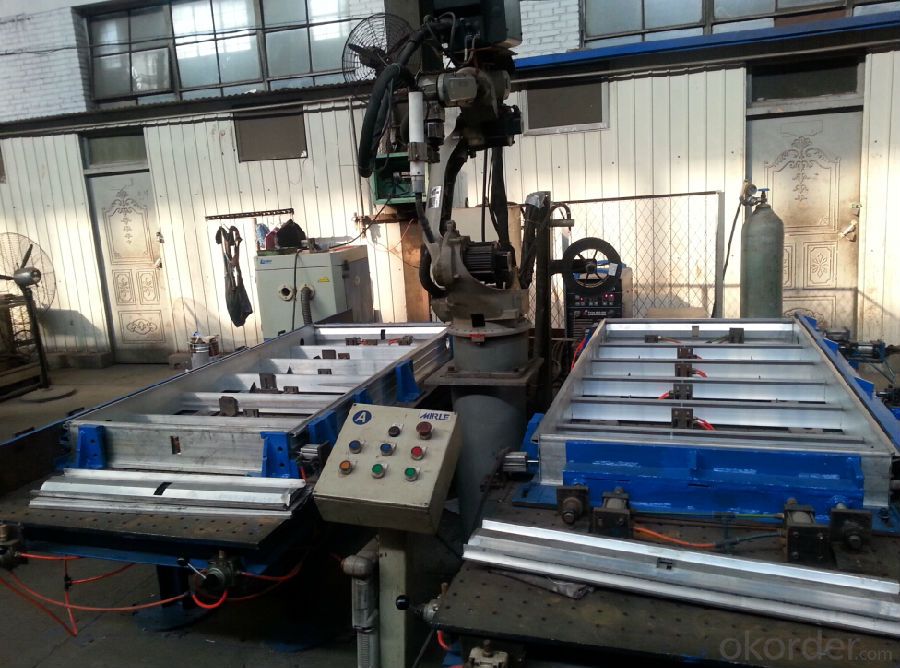
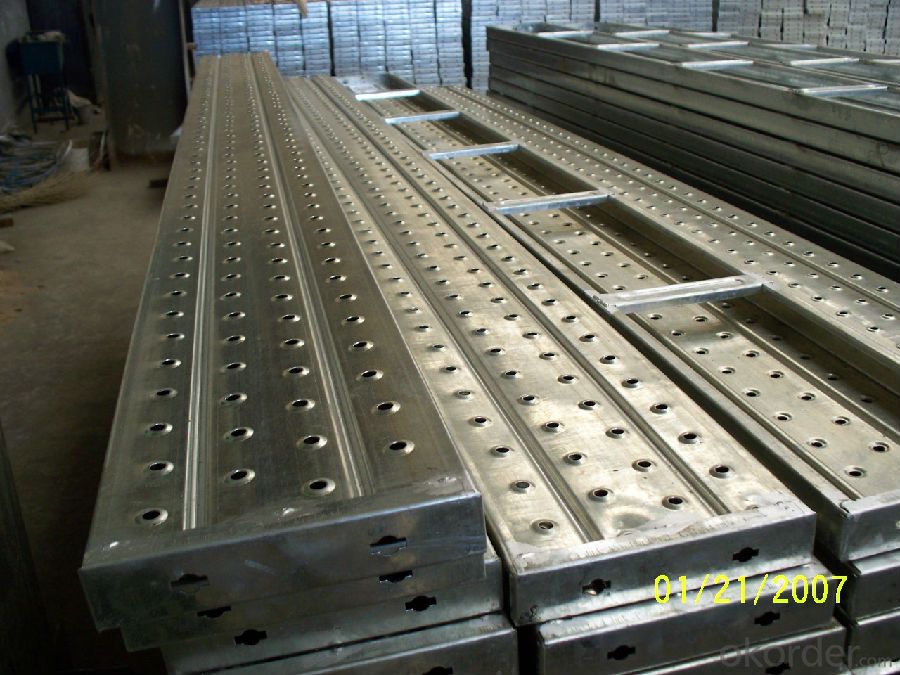
- Q: How does steel formwork contribute to the sustainability of the construction industry?
- The sustainability of the construction industry is enhanced by steel formwork in various ways. To begin with, steel formwork is remarkably robust and long-lasting. Unlike traditional wooden formwork, which requires frequent replacement, steel formwork can be reused multiple times. This reduces the need for new materials and minimizes waste, benefiting construction companies financially and reducing the demand for timber, thus lessening the industry's environmental impact. Furthermore, steel formwork is more efficient and time-saving compared to other types of formwork. Its usage enables faster assembly and disassembly, resulting in reduced construction time and costs. This increased efficiency leads to lower energy consumption and carbon emissions, thereby contributing to the sustainability of the construction process. Additionally, steel formwork offers design flexibility and adaptability. It can be easily employed in the construction of complex structures, eliminating the need for additional materials and resources. This adaptability not only reduces construction waste but also enhances the sustainability of the industry. Moreover, steel formwork possesses a high load-bearing capacity, enabling the construction of taller and stronger structures. This reduces the amount of materials required to achieve the desired structural integrity, resulting in decreased resource consumption and waste generation. The ability to construct more durable buildings also contributes to the long-term sustainability of the construction industry by reducing the frequency of repairs or replacements. Lastly, steel formwork is recyclable. At the end of its lifespan, it can be efficiently and easily recycled, reducing the need for new steel production and minimizing the environmental impact associated with its extraction and manufacturing. In conclusion, the durability, efficiency, flexibility, load-bearing capacity, and recyclability of steel formwork contribute to the sustainability of the construction industry. By reducing waste, energy consumption, and carbon emissions, it promotes a more sustainable and responsible approach to construction projects.
- Q: How does steel formwork affect the overall sound insulation of the structure?
- Steel formwork does not directly affect the overall sound insulation of the structure since its primary purpose is to provide support during the construction process. However, the use of steel formwork may indirectly impact sound insulation if it affects the placement or installation of soundproofing materials or if it introduces gaps or discontinuities in the structure that can potentially compromise sound insulation.
- Q: Types of building templates? What is clear water template?
- Steel template: in addition to the combination of steel templates, has developed a wide steel template, all steel large formwork, light steel mold, 63 steel frame steel template. The high cost of steel mold, in addition to large projects such as bridges or other buildings, nuclear power plants, reservoirs and other construction sites, has been replaced by building wooden template.
- Q: Can steel formwork be used for architectural construction projects?
- Yes, steel formwork can be used for architectural construction projects. Steel formwork is a versatile and durable construction material that is commonly used in architectural projects. It offers numerous advantages such as high strength, stability, and reusability. Steel formwork is capable of withstanding high pressure and can provide a smooth and precise finish to concrete structures. Additionally, it is resistant to warping, bending, and shrinking, ensuring the structural integrity of the construction. Steel formwork can be customized to fit any shape or size, allowing architects to create unique and complex designs. Due to its strength and durability, steel formwork can be used repeatedly, making it a cost-effective option for construction projects. Overall, steel formwork is a reliable and efficient choice for architectural construction projects.
- Q: What are the features of the new building template?
- On the basis of all steel construction formwork, the surface of the template is extremely smooth, and can reach the international standard of fair faced concrete
- Q: What are the considerations when designing steel formwork for underground parking structures?
- When designing steel formwork for underground parking structures, several key considerations should be taken into account. Firstly, the formwork must be able to withstand the heavy loads and pressures exerted by the surrounding soil and any potential water infiltration. It is crucial to ensure the strength, stability, and durability of the formwork system to prevent any structural failures or collapses. Additionally, careful attention should be paid to the formwork's waterproofing capabilities. Adequate waterproofing measures, such as the use of sealants or membranes, must be incorporated to protect the structure against potential water ingress, which could lead to corrosion and long-term damage. Moreover, the design should allow for efficient and safe construction. This includes considering factors such as ease of assembly and disassembly, ensuring proper access and working space for construction workers, and incorporating appropriate safety measures to prevent accidents during the formwork installation and removal processes. Lastly, the formwork design should also take into consideration the desired architectural and aesthetic elements of the parking structure. This may involve incorporating specific finishes, textures, or patterns on the exposed concrete surfaces, which can enhance the overall visual appeal of the underground parking facility. Overall, the considerations when designing steel formwork for underground parking structures revolve around ensuring structural integrity, waterproofing capabilities, construction efficiency, safety, and meeting the desired architectural requirements.
- Q: Can steel formwork be used for both slab and beam construction?
- Indeed, steel formwork is applicable for both slab and beam construction. Within the construction industry, steel formwork proves to be a flexible and long-lasting alternative for constructing slabs and beams. It furnishes a robust and inflexible framework that can endure the weight and pressure exerted by the poured concrete. With easy assembly and disassembly, steel formwork emerges as a fitting choice for diverse construction undertakings. Its sturdiness and steadiness render it an optimal selection for both slab and beam construction, guaranteeing that the concrete structures adhere to the necessary specifications and can adeptly bear the loads they are designed for.
- Q: How does steel formwork affect the overall labor productivity in construction?
- Steel formwork can have a significant impact on labor productivity in construction. Firstly, steel formwork is known for its durability and strength, which allows it to withstand the pressures and forces exerted during the concrete pouring process. This reduces the need for frequent repairs or replacements, minimizing downtime and increasing overall labor productivity. Additionally, steel formwork offers a high level of accuracy and precision in creating concrete structures. This results in better quality finishes and reduces the need for rework or corrections, saving time and effort for construction workers. The ability to achieve consistent dimensions and smooth surfaces with steel formwork also enhances the overall efficiency of the construction process. Furthermore, steel formwork is known for its ease of assembly and dismantling. The modular nature of steel formwork systems allows for quick and efficient setup, reducing the time spent on formwork erection. Similarly, the ease of dismantling enables faster turnaround times between construction phases, allowing workers to progress to the next task more swiftly. Moreover, steel formwork systems often incorporate features such as adjustable props, clamps, and connectors, making them highly adaptable to various construction requirements. This versatility enables workers to quickly adjust and modify the formwork to accommodate changes in design or construction plans, eliminating delays and improving labor productivity. Lastly, steel formwork can contribute to a safer working environment. The robustness and stability of steel formwork systems offer enhanced protection for construction workers, reducing the risk of accidents and injuries. By ensuring worker safety, steel formwork promotes a more efficient and productive construction process. In summary, steel formwork positively impacts labor productivity in construction by providing durability, accuracy, ease of assembly and dismantling, adaptability, and improved safety. These factors contribute to a more efficient construction process, reducing downtime, rework, and the overall time required for project completion.
- Q: How does steel formwork contribute to the quality of the concrete finish?
- Steel formwork plays a crucial role in ensuring the quality of the concrete finish. Firstly, steel formwork provides a strong and rigid framework that holds the concrete in place during the pouring and curing process. This prevents any movement or deformation of the concrete, resulting in a smooth and even finish. Additionally, steel formwork offers better dimensional stability compared to other types of formwork materials. It does not warp or distort under the pressure of the wet concrete, ensuring accurate and consistent shapes and dimensions. This is particularly important for structures that require precise measurements, such as beams, columns, or walls. Moreover, steel formwork allows for better control over the surface finish of the concrete. The smooth and non-absorbent surface of steel minimizes the risk of air bubbles or voids forming on the concrete surface. This results in a visually appealing finish with reduced imperfections. Furthermore, steel formwork provides excellent resistance to moisture and chemicals present in the concrete mix. This prevents the formwork from being damaged or deteriorated, ensuring a clean and unblemished concrete finish. It also allows for easy removal of the formwork once the concrete has cured, without leaving any residues or marks on the surface. Lastly, steel formwork can be reused multiple times, making it a cost-effective and sustainable choice. The ability to reuse the formwork ensures consistent quality in subsequent concrete pours, as the same set of formwork will provide the same level of support and accuracy. This eliminates the need for frequent investments in new formwork materials, reducing overall project costs and environmental impact. In conclusion, steel formwork significantly contributes to the quality of the concrete finish through its strength, dimensional stability, control over surface finish, resistance to moisture and chemicals, and reusability. Its use ensures a smooth, accurate, and visually appealing concrete surface while providing durability and cost-effectiveness to construction projects.
- Q: Can steel formwork be used for concrete beams with varying cross-sections?
- Yes, steel formwork can be used for concrete beams with varying cross-sections. Steel formwork is highly versatile and can be easily adjusted and customized to accommodate different shapes and sizes of concrete beams. It offers flexibility in terms of formwork design and allows for the creation of complex and irregular shapes. Additionally, steel formwork provides excellent strength and durability, making it suitable for supporting the weight and pressure exerted by concrete during the pouring and curing process. Overall, steel formwork is an ideal choice for constructing concrete beams with varying cross-sections, as it offers adaptability, strength, and reliability.
Send your message to us
Special Shape Steel Formwork for Airport Construction
- Loading Port:
- Tianjin
- Payment Terms:
- TT OR LC
- Min Order Qty:
- 50 pc
- Supply Capability:
- 100000 pc/month
OKorder Service Pledge
OKorder Financial Service
Similar products
Hot products
Hot Searches
